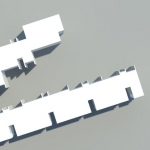 Grossi Giovanetti
Lun, 18/05/2015 - 21:52
Grossi Giovanetti
Lun, 18/05/2015 - 21:52
importando il nostro progetto su Vasari e studiando le ombre da esso create durante il solstizio d'estate e d'inverno (i momenti più critici per quel che riguarda il comfort) abbiamo convenuto che l'espoizione est-ovest fosse la miglior soluzione affinchè le aitazioni disponessero di un comfort adeguato. di seguito riporteremo i render più significativi.
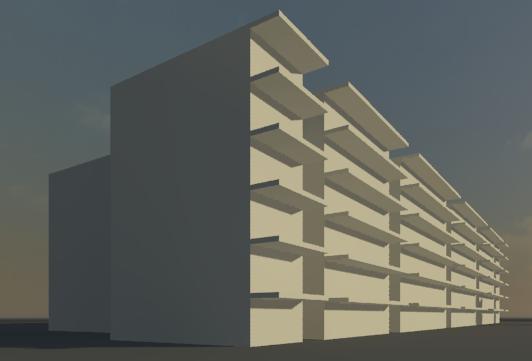 21_12 ore 16
21_12 ore 16
 21_06 ore 12
21_06 ore 12


abbiamo inoltre analizzato l'effetto della radiazione solare durante il periodo estivo.

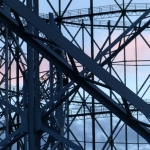 Farruggia_Giannini
Lun, 18/05/2015 - 21:38
Farruggia_Giannini
Lun, 18/05/2015 - 21:38
Le consiederazioni espresse sul soleggiamento dell'area di progetto rimango invariate a quanto detto nella precedente consegna. Avendo radiclamente modificato il masterplan, risulta evidente che, facendo un confronto con il primo, l'esposizione al sole, sia degli edifici che degli spazi urbani, è molto più diversificata. Questa analisi ci permetterà di progettare gli ambienti, soprattutto quelli interni, con una maggiore consapevolezza degli effetti del soleggiamento su di essi, con il fine di soddisfare tutti i comfort, senza dover ricorrere ad un uso smodato degli impianti che gravano sulle condizioni ambientali.
SOLSTIZIO D'INVERNO

EQUINOZIO DI PRIMAVERA
 SOLSTIZIO D'ESTATE
SOLSTIZIO D'ESTATE

 Folgiero_Guratti
Lun, 18/05/2015 - 21:05
Folgiero_Guratti
Lun, 18/05/2015 - 21:05
We want to analyze the impact of trees on the facades and on the open space surrounding the buildings analyzed in the previous exercises. We can notice how the choice of the types of trees is strictly related to design, so trees are an important architectonical element.
We decided to focus on the trees in Via Oderisi da Gubbio, in order to keep attention on the building analyzed in Via Borghesano Lucchese and on its context.
The type of tree analyzed is the Platanus acerifolia.
Platanus Acerifolia is a tree in the genus Platanaceae. It is usually thought to be a hybrid of Platanus Orientalis and Platanus Occidentalis.
The Platanus Acerifolia is a large deciduous tree growing 20–30 m, exceptionally over 40 m tall, with a trunk up to 3 m or more in circumference. The bark is usually pale grey-green, smooth and exfoliating, or buff-brown and not exfoliating. The leaves are thick and stiff-textured, broad, palmately lobed; the leaf blade 10–20 cm long and 12–25 cm broad, with a petiole 3–10 cm long. The flowers are borne in one to three (most often two) dense spherical inflorescences on a pendulous stem, with male and female flowers on separate stems. The fruit matures in about 6 months, to 2–3 cm diameter, and comprises a dense spherical cluster of achenes with numerous stiff hairs which aid wind dispersal.
It shares many visual similarities with Platanus Occidentalis, of which it is derived; however, the two species are relatively easy to distinguish, considering the Platanus Acerifolia is almost exclusively planted in urban habitats: in fact, thanks to its resistance to smog and pollution, it is often used as an ornamental plant.
Platanus in Via Oderisi da Gubbio
Leaves of the Platanus
Tronk of the Platanus
MODELING
Step 1.
Open Vasari, select
Families > new conceptual mass > mass.rft.
In order to open a proper workspace


Before you start modeling, change the project units into meters.


Step 2.

Once you have identified the height of the tronk and the foliage, you can start drawing.
In order to draw the tree, we identified a section at the beginning of the foliage, and then a section for every meter.
Going on Model>Level, you can create as much levels as the sections, which will be useful to create the mass.


Step 3.
These levels will always appear in the menu Project Browser>Floor Plans and, clicking on them, you can access to the plan view of the single level.
Clicking on the circle icon (in Model) and then on “Draw on the work plane” (to be sure to work on the correct plane) you will be able to draw all the sections.


Step 4.
Now, you can create volumes.
You will click on Modify> Create form to generate the foliage from the sections


Step 5. To study the parameters of the tree, click Model>Family types>Add and give a name for each parameter (for example “Raggio 1”, “Raggio 2”…) with the height.
Finally, tick every item and go on.


Step 6. Select the volume and click on the command “X-Ray”

Step 7. To dimension the whole tree, click on “Aligned Dimension” (tronk) or “Radial Dimension” (rays of the foliage)

We obtained the dimensioned volume. Now, having turned heights into parameters, you can change dimensions of every element which composes the tree by changing only one parameter.
Step 8. Now, open the window “Properties” and tick “visible”, “add parameter”, give a name, tick “instance”

Step 9. What we want to do, is to study the influence of trees on our building.
So, let’s insert our trees in the previous study: you have to oper the file with the project and click on “Place Mass”, then on “Load Family”


CONSIDERATIONS
Spring Equinox



Observing this study, we can easily say that a big tree like the Platanus Acerifolia influences the solar radiation of the near buildings.
The Platanus blooms during the spring, so we can deduce that during the winter its foliage doesn't obscure the facades, so the sun is allowed to heal the building.
But, during the spring and the summer, this high tree is able to protect the facades from the hottest solar rays.
Also, this ornamental tree shades the sidewalk, and people can join freshness during hot days.
The good coexistence of this type of tree and its context may depend on the elevate height of both trees and near buildings: in this case, they are balanced. It could be a problem if a Platanus was planted near a 2-floors-building, because the building would have been shaded steadily.
By these considerations, the Platanus results an excellent ornamental tree not only for its aesthetic value or its resistance to pollution and poor maintenance, but also for its "social" contribution, giving comfort or not obstacolating sun, depending by the period of the year!
Lun, 18/05/2015 - 21:42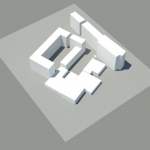 Mas_Izquierdo
Lun, 18/05/2015 - 20:05
Mas_Izquierdo
Lun, 18/05/2015 - 20:05
PROGETTO DI ARCHITETTURA
Il nostro progetto si trova reddito in una zona con abbastanza ampiezza. Esistono tre facciate di progetto che possiamo utilizzare, dando questi a nord, sud ed ovest. Il nostro progetto l'abbiamo voluto fare verso i quattro punti cardinali potendo generare così vari tipi di soluzioni.
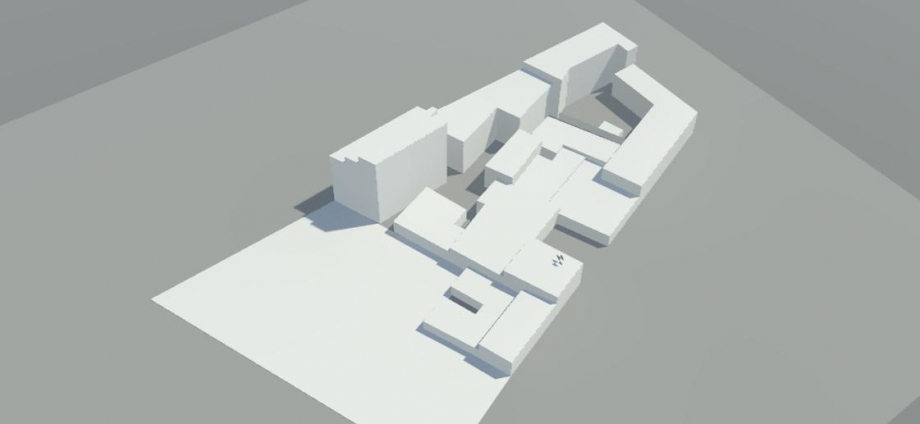
Di seguito mostriamo l'analisi di ombre che vengono generate in distinte epoche dell'anno
ESTATE 12:00
 ESTATE 15:00
ESTATE 15:00

IVERNO 12:00
IVERNO 15:00
Con l'analisi realizzata possiamo osservare come in estate i volumi non generano quasi ombra nello spazio esterno, per quello che dovremo utilizzare un altro tipo di elementi per generare un'ombra comoda per l'utente, ed affinché possa utilizzare lo spazio.
Invece nell'inverno osserviamo che genera un'ombra nello spazio pubblico ma che non influisce di gran maniera negli edifici, per quello che le abitazioni saranno ben soleggiate.
Di seguito studiamo la radiazione solare:
ESTATE 9:00

ESTATE 12:00

ESTATE 16:00

Con questa analisi possiamo osservare che nella piazza interna a partire dai12:00 si creda una zona più fredda, e pertanto più confortevole nell'epoca dell'estate. Possiamo dire che le facciate che danno ad ovest dovranno dotarli di un tipo di brisolei o elementi che permettano una minore radiazione diretta nelle abitazioni.
IVERNO 9:00

IVERNO 12:00
IVERNO 16:00

Studiando l'analisi della radiazione solare in inverno possiamo osservare giusto il contrario che in estate. Benché le facciate che danno questa volta ad ovest presentino una migliore soluzione per la radiazione, dato che captano meglio il caldo del sole. In questo caso dobbiamo servire meglio le abitazioni che danno a nord poiché saranno quelle che peggiore lavorino in quanto alla ricezione di energia e caldo solare.
Nuove immagini del progetto:

Dal 01/03_31/03 dalle 10.00 alle 16.00 ore Dal 01/06_30/06 dalle 10.00 alle 16.00 ore
 Dal 01/09_30/09 dalle 10.00 alle 16.00 ore Dal 01/12_31/12 dalle 10.00 alle 16.00 ore
Dal 01/09_30/09 dalle 10.00 alle 16.00 ore Dal 01/12_31/12 dalle 10.00 alle 16.00 ore
Ombre:
IVERNO:

ORE:10.00 ORE:13.00 ORE:16.00
ESTATE:
 ORE:10.00 ORE:13.00 ORE:16.00
ORE:10.00 ORE:13.00 ORE:16.00
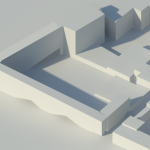 Gualtieri_Merlin
Lun, 18/05/2015 - 18:47
Gualtieri_Merlin
Lun, 18/05/2015 - 18:47
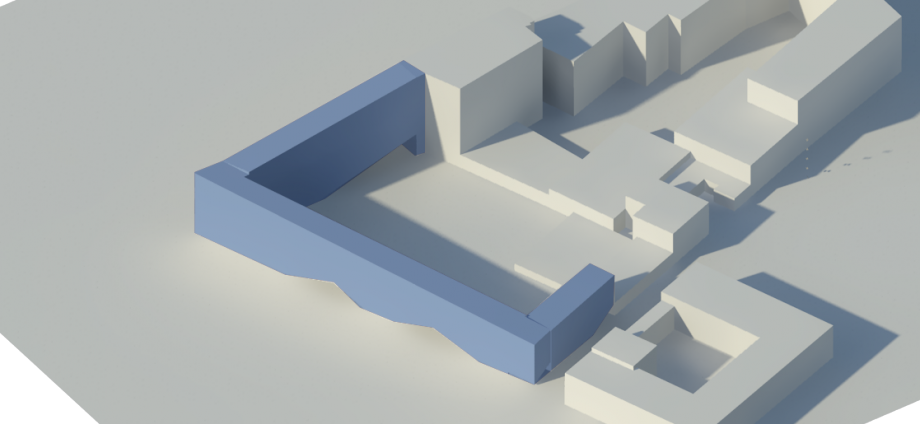
Questo progetto è vicino alla via Ostiense, all'angolo della via del Commercio et della via del Porto Fluviale.
E un sito molto interessento, perchè un po industriale, c'è il gazometro vicino, ma non troppo lungho di Ostiense che è un quartiere in movimento.
Il nostro progetto ha per scopo di ricostituire il tessuto urbano di questa isoletta, questo è perché egli prende la forma di un "C" per
venire a chiudere l'estremità dell'isoletta che ritrova così un'unità. L'altezza dell'edificio è determinata dalle costruzioni vicine,
per non venire a creare di ombre troppo importante.
Tutta la zona interiore è lasciata libera per fare un parco su che tutti gli alloggi avranno visto. Questo spazio è utilizzato anche per
sviluppare un gioco di passerella per servire gli alloggi.
Ogni alloggio sta attraversando, grazie a questa analisi, possiamo vedere che grazie a ciò, ogni abitazione approfitta della luce del
Sud e di un ensoleillement importante a differenti ore della giornata.
Analisi dell'ombra :
Summer Solstice

Fall Equinox

Winter Solstice

Spring Equinox

Analisi delle radiazione solare :
Summer Solstice
Winter Solstice
One-year
Lun, 18/05/2015 - 19:05


